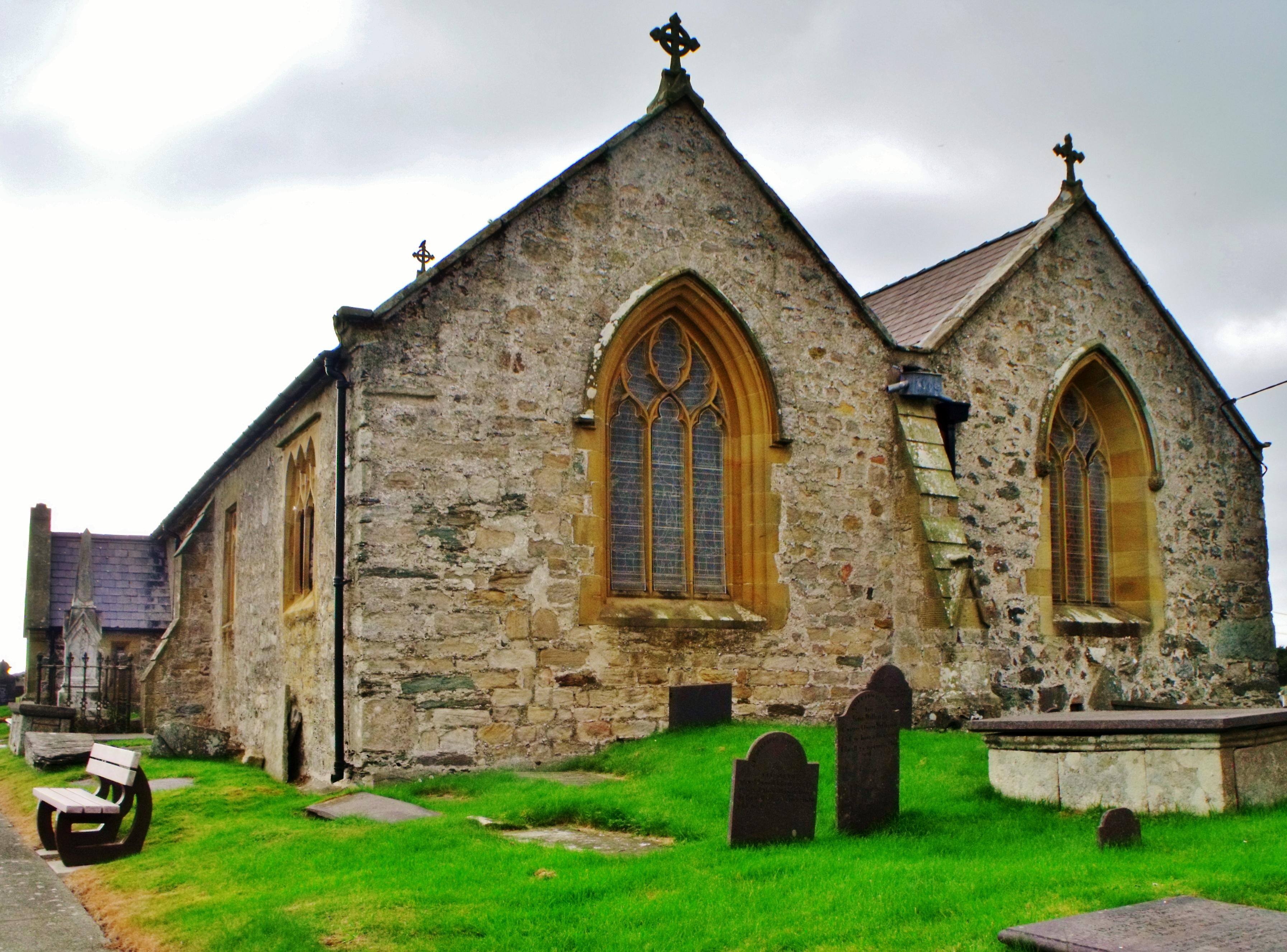St Cwyfan
Llangwyfan, Anglesey
It may seem an odd and perilous place to build a church, but St Cwyfan's originally stood at the end of a peninsula between two bays, as shown on John Speed's map of Anglesey from 1636.

A 12th century parish church, St Beuno's may have been used as a royal chapel during the early Middle Ages, as the princes of Gwynedd had a court in Aberffraw.
Aberffraw, Anglesey
The oldest parts of the church date from the 12th century, although it was considerably enlarged in the 16th century when a second nave was built alongside the existing structure, with the wall in between replaced by an arcade of four arches. Restoration work in 1840 uncovered a 12th century arch in the west wall, which may have been the original chancel arch or a doorway to a western tower that has been lost. The church also has a 13th century font, some memorials from the 18th century, and two 18th century copper collecting shovels.
The church is set within a large churchyard. The first church community was established in Aberffraw in the 7th century by St Beuno (a Welsh holy man who became the abbot of Clynnog Fawr, on the Llŷn Peninsula in Gwynedd).
Llangwyfan, Anglesey
It may seem an odd and perilous place to build a church, but St Cwyfan's originally stood at the end of a peninsula between two bays, as shown on John Speed's map of Anglesey from 1636.
Llangadwaladr, Anglesey
Best known as the burial place of King Cadfan of Gwynedd, who died around 625 AD, shortly after the church was established.
Tal y Llyn, Anglesey
Tal y llyn sits in a huge churchyard which throws into relief its diminutive scale.